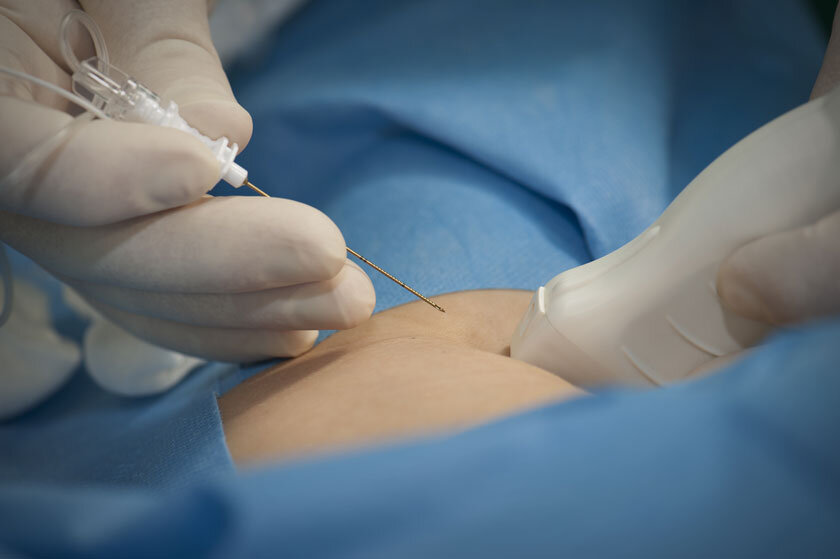Platelet-Rich Plasma (PRP) Therapy
Platelet-rich plasma (PRP) therapy is a relatively new orthopedic treatment that harnesses the body’s natural ability to heal itself – specifically, the ability to regenerate bone and soft tissue. This is done by using blood platelets, which are substances that naturally occur in our own bodies. Through PRP therapy, doctors are able to bring healing platelets to an injury site faster and in greater numbers.
How PRP Therapy Works
PRP injections are prepared by drawing a patient’s blood and running it through a centrifuge to separate the platelets and plasma from the rest of the blood. These activated platelets, rich with proteins called growth factors, are then injected directly into your affected body tissue. When injected, these growth factors stimulate and increase the number of reparative cells your body produces, resulting in fast healing.
With PRP therapy, Dr. Sparks uses ultrasound-guided injections. Ultrasound-guided joint injections are an advanced method of treatment that allows the ultrasound images to guide the needle to the site of injury.
PRP injections are commonly used to treat the following conditions:
Osteoarthritis of the knee, shoulder, and hip
Tennis or Golfer’s elbow
Rotator Cuff Tendonitis
Achilles Tendonitis
Plantar Fasciitis
ACL injuries
Ankle sprains
According to a study published by the American Journal of Sports Medicine, patients with chronic elbow tendinosis showed the following results after the PRP injection:
46% pain relief by 4 weeks
60% pain relief by 8 weeks
81% pain relief by 6 months
At the conclusion of the study, 93% of the patients were completely satisfied with the treatment and had avoided surgery.
If you are not a candidate for surgery but still suffer from injury pain that isn’t being resolved with physical therapy, you may be a candidate for PRP Therapy.
PRP Therapy or Stem Cell Therapy?
PRP and stem cell therapy are two techniques of regenerative medicine—the rebuilding of injured tissues and organs to restore normal body function. While both treat similar types of injuries and health conditions, they are very different from each other.
PRP uses platelet-rich plasma of your blood, which has growth factors, while stem cell therapy uses stem cells that have the ability to regenerate into specific cell types. Another difference is how the cells are harvested. Platelets for PRP can be taken from the blood, while acquiring stem cells may require access to the bone marrow. Additionally, PRP involves accelerating the natural healing process while stem cell therapy focuses on replacing injured tissue.
Your orthopedic specialist will recommend the type of regenerative therapy will be best for treating your particular injury.
To learn more about the benefits of innovative PRP Therapy, contact us to schedule an appointment at our office in Conroe.


